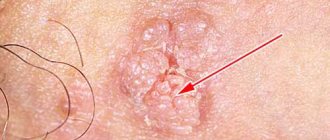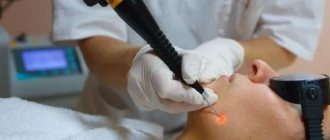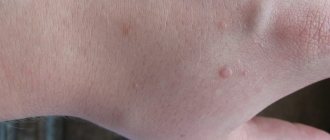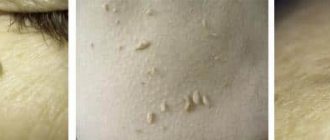The appearance of condylomas in the vagina is associated with the presence of the human papillomavirus in the body. The first symptoms make themselves felt by discharge with blood clots, pain during sexual intercourse and discomfort while walking. A specialized forum and multiple reviews of women suffering from this disease will help you become more familiar with the symptoms. The emergence of suspicions of papillomavirus is a reason to contact a specialist.
Despite the fact that neoplasms are considered benign, the fact that condylomas can degenerate into malignant forms can never be ruled out. In order to prevent complications, representatives of the fair sex should undergo annual preventive examinations and, if they have problems with intimate organs, seek help from a gynecologist.
The main reasons for the development of HPV in the vagina are sexual contact with an infected partner and failure to comply with personal hygiene rules.
Important! The HPV virus in women can be expressed by various types of growths. However, the appearance of warts on the hands will never provoke the formation of condylomas in the vagina and vice versa.
Ignoring treatment of the disease can provoke the occurrence of condylomatosis, which is characterized by large-scale growth involving the anus, perinatal fold, and intestinal area. In appearance, condylomas in the vagina resemble cauliflower in a flesh-greyish color, not exceeding 7 mm in diameter. A sharp mutation and multiple spread of condylomas in the vagina begins during weakening of the immune system and during the period of bearing a child.
Genital warts (genital warts)
Genital warts (genital warts, genital warts) are skin formations, mainly in the genital and anal areas, caused by the human papillomavirus (HPV), usually types 6 and 11.
The virus is transmitted primarily through sexual contact. Factors predisposing to the disease include excess moisture and superficial microtraumas of the skin, discharge from the urethra and vagina due to gonorrhea, trichomoniasis and other genitourinary infections, and poor hygienic care of the anal-genital area.
Externally, genital warts are warty formations of pale pink color, consisting of a large number of merging nodular elements with outgrowths that externally resemble cauliflower or a cockscomb. The base of the growths is narrowed in the form of a stalk, the lobulated structure of condylomas is characteristic.
With constant mechanical irritation, the surrounding skin becomes inflamed, acquiring a bright red color. In the absence of proper care, genital warts macerate, the papillary formations can erode and ulcerate with purulent discharge and an unpleasant odor.
Genital condylomas are usually located at the junction of the mucous membrane with the skin (genitalia, mucous membrane of the urethra and rectum, anal area, oral mucosa, conjunctiva). In the absence of treatment and reduced immunity, genital warts can reach large sizes (“giant condylomas”) and significantly complicate the patient’s life, preventing the implementation of personal hygiene measures.
Basic mechanisms of infection
It is known that condylomas are caused by the human papillomavirus, which can be transmitted through sexual contact. Today, about 78% of all inhabitants of the planet are infected with the virus, and every year this figure is increasing.
The peculiarity of this virus is that it can remain in the human body for years and not show itself in any way. When immunity decreases, the virus quickly activates, 3 weeks after infection, manifesting itself in the form of condylomas. There are cases when the immune system, on the contrary, is very strong, then a person simply becomes a carrier of the virus and, not knowing about his illness, infects his sexual partners.
Entering the human body through the blood, the virus begins to actively infect healthy cells on the skin and mucous membranes. Due to the specific structure of the virus, the normal process of cell development changes, that is, in the human body, skin cells begin to divide incorrectly, which is why cone-like growths-condylomas appear.
For the development of condyloma, moist, warm conditions are needed, so the virus is most often transmitted through sexual contact, although there is also the possibility of household transmission of condyloma. Answering the question why the papilloma virus is transmitted through sexual contact, I would like to note that during sexual intimacy, partners come into close contact with each other. If there are minor damages, cracks or even microtraumas on the mucous membranes of their genitals after hair removal, the virus penetrates the blood of a healthy person and begins to reproduce.
There is another way of infection, which, of course, is much less common, and involves transmission of the virus through household means. The myth about exclusively sexual transmission of the human papillomavirus has long been dispelled by qualified scientists, although the non-sexual route of infection has not yet been fully studied. It is known that condylomas appear in humans after using general hygiene products and toilet accessories. It is believed that the virus can enter the body even after a kiss, since the mucous membrane of the lips is an ideal place to localize the virus.
Kinds
- Keratotic. Horn-shaped growths resembling cauliflower or seborrheic keratosis; usually located on dry skin (women's labia).
- Papular. Such condylomas have a characteristic dome-shaped shape, a diameter of 1 to 4 mm and a smooth surface (less horny than in the case of keratotic ones) of a reddish color. Location: keratinized skin.
- Giant Buschke-Levenshtein condylomas. These are large formations that develop in patients with a reduced level of cellular immunity, as well as in pregnant women.
Classification by localization
As for the localization of genital warts, condylomas are distinguished based on this feature:
- external anogenital (located in the area of the labia majora and minora);
- vaginal, which are located in the area of the vestibule of the vagina;
- endourethral (formed in the urethra);
- anal (located in the anus area);
- cervical tumors;
- oral cavity (localized on the lips, tongue, mucous membrane of the cheeks).
Characteristic features of papillomas
Papilloma is a benign neoplasm that does not cause discomfort other than aesthetic. Characteristic features of papillomas:
- soft homogeneous structure;
- presence of a leg;
- small size (up to 10 mm in diameter);
- moderate pigmentation.
Papillomas are localized on any parts of the body except the mucous membranes of the genital organs. As a rule, the color of the growth varies from the natural shade of the skin to pinkish-red shades, however, highly pigmented papillomas are also not a pathology. Hair growth on the body of papilloma is a normal variant.
Flat papillomas
Papillomas are not dangerous if they do not interfere with the patient and are not subject to accidental damage in everyday life. The formation of growths of this type is caused by the action of strains 2, 7 and 28 of the virus. You can become infected with these types of HPV at home and through sexual contact.
Causes and symptoms
Considering that the infection is most often transmitted through sexual contact, the main cause of infection can be considered unprotected sexual contact.
Promiscuous sexual intercourse and frequent changes of partners significantly increase the risk. Expert opinion Sakania Luiza Ruslanovna
Dermatovenerologist, cosmetologist, trichologist
Ask a Question
Failure to comply with personal hygiene rules can lead to infection through contact and household contact, especially if there are skin lesions.
In most cases, after infection, a man remains only a carrier of the virus, which, during normal immune function, does not manifest itself in any way. The development of the disease occurs in the presence of predisposing factors:
- Prolonged hypothermia
- Overwork, lack of sleep
- Excessive exercise
- Constant stress
- The presence of chronic inflammatory foci in the body
The risk group includes mainly young men (under 25-30 years old) who are sexually active and often change partners. Anogenital warts often bleed, especially when they grow profusely and are in an awkward location where they are subject to rubbing. In some cases, they cause pain and irritation of the skin.
The main symptoms of genital warts are:
- Unpleasant sensations during bowel movements and urination (with appropriate placement)
- Discomfort, pain when walking, as well as during intimacy
- Burning and itching in the genital area and anus
Transfer in a public place
If condylomas occur, methods of infection should be sought in the contact of a person or child with an infected person in a public place. Infection can occur:
- At school;
- kindergarten;
- At work;
- in a swimming pool;
- on the beach, etc.
To avoid infection, you should take care of your immunity, get rid of bad habits, and switch to high-quality nutrition. In addition, it is good to monitor the condition of the skin, treat wounds and cracks. It is imperative to avoid sexual contact with strangers and not to take other people's things.
Diagnostics
Most often, to make a correct diagnosis, a specialist only needs to know the clinical picture, since this type of HPV is easily identified.
Upon examination, small, from 1 mm to 2 cm, nodules are noticeable, located singly and having either a flesh-colored or light pink color. If condylomas have grown in the urethra, a special analysis will be required - urethroscopy. Expert opinion
Sakania Luiza Ruslanovna
Dermatovenerologist, cosmetologist, trichologist
Ask a Question
If differential diagnosis is necessary (if large condylomas are detected and syphilis is suspected), then additional tests are performed. Such wide condylomas differ from genital condylomas in that they are arranged in a cluster and have a wide base. They also do not bleed when damaged.
To identify possible infections of the genital organs, special tests are additionally performed. The doctor’s prescription, method of removal and further therapy to combat secondary infection will depend on this.
Now doctors can offer each patient a unique DNA diagnosis. This allows you to identify oncogenic risk, find out the type of virus and its amount in the body.
Is HPV transmitted if there are no condylomas?
As we have already said, it is not the condylomas themselves that are transmitted, but the papillomavirus that causes them.
Condylomas are just a symptom.
Is the flu transmitted if there is no cough?
Is intestinal infection transmitted if there is no diarrhea?
Is human papillomavirus infection transmitted if there are no condylomas?
All these questions can be put in one row.
The answer to all will be yes.
The infection is transmitted regardless of the presence or absence of certain symptoms.
Even if these are the most common symptoms that are the “face” of the disease.
Papillomavirus manifests itself not only as condylomas.
Sometimes they don't appear at all.
In some cases, they occur in places inaccessible to inspection.
Therefore they go unnoticed.
In women, human papillomavirus infection often manifests itself only as changes in the epithelium of the cervix.
Only a doctor can notice it.
And even then, when conducting special research.
Condylomas inside the vagina often go unnoticed.
In addition, even on the external genitalia they may not be noticeable.
Often, human papillomavirus infection manifests itself not as genital warts, but as spots or papules.
In addition, with a high viral load, condylomas do not appear immediately.
They grow gradually, a process that takes several weeks.
Even before their appearance, a person can already be a source of infection and infect his sexual partners.
Methods for removing genital warts
Genital warts, the treatment of which modern medicine reduces to direct action on the affected areas, can be removed using the following methods:
- cryodestruction (a specialist cauterizes the formation using liquid nitrogen, due to the low temperature of which the growths are removed);
- thermocoagulation (this treatment allows the formation to be removed by cauterization; a scab appears at the site of the growth, which falls off over time);
- chemical destruction (treatment in which pointed growths are treated with medications that guarantee removal of the condyloma);
- laser destruction (removal with a special surgical laser);
- radiosurgical removal (the formation is destroyed by a narrowly directed high-frequency beam of radio waves).
Unfortunately, modern medicine has not yet developed a remedy that would completely cure HPV.
Existing methods are based mainly on alleviating the condition of patients and increasing the duration of periods between relapses of the disease.
Removal of papillomas in the vagina, indications and contraindications
Before you get rid of unpleasant and dangerous growths, you will need to undergo a series of laboratory tests and undergo a diagnostic examination.
Each removal method has different contraindications. Common ones are the following:
- cancer risk in the active phase;
- increased body temperature;
- ARVI or other disease in the acute phase;
- the presence of chronic pathologies;
- epileptic seizures, problems with the central nervous system;
- period of pregnancy and childbearing;
- high unbreakable blood pressure.
Regarding pregnancy, we can say that in some cases doctors decide to carry out measures to remove condylomas. This applies to cases where the risk to the health of the newborn is too great. Removal of tumors is carried out in the 3rd trimester of pregnancy.
Diagnosing condylomas on the cervix requires emergency surgical intervention, since in most cases benign growths quickly degenerate into malignant ones. How to remove condyloma, and in what way, is decided by a specialist. He is also the main specialist who will explain to the woman how to behave after removal of tumors. Treatment will be long-term and involves the additional use of tablet medications. HPV ointment will alleviate the condition and speed up the healing process.
The main methods for removing condylomas in the intimate parts of women’s bodies include:
- medicinal;
Involves the use of tablets, ointments, vaginal suppositories and creams.
- chemical;
The procedure is carried out using special highly concentrated drugs: Solcoderm, Condilin.
- freezing;
A cryodestruction technique that involves freezing with liquid nitrogen.
- electric shock treatment;
Removal of genital warts is carried out with a special device using an electric current of a certain power.
- immunotherapy;
Fighting condyles with immunomodulatory drugs.
- laser;
A modern technique, which we will introduce a little later.
- surgical.
This involves surgical excision of the tumor.
Each of these methods is effective. The individual characteristics of the body and the severity of the disease play an important role.
How does cauterization of condylomas occur in the vagina?
The hardware method of getting rid of growths is the safest and does not entail consequences for the body.
Laser removal is an innovative technique that involves the targeted influence of a laser beam on the problem area. The amount of exposure to the beam over time is controlled by the attending physician. The technique is painless and short in time.
As a rule, a small blister remains at the site of the hardware intervention, which must not be injured or broken. Changes in the surface condition of the skin go away on their own. The patient is required to be patient and follow the doctor's recommendations.
Laser therapy is beneficial from all sides. A small drawback is its high cost. This method is considered the most correct, since during the procedure it is impossible to introduce infection through blood or other means. The laser beam qualitatively removes the root of the tumor, which ensures a long-term stage of remission.
You can cauterize condylomas in the vagina using specialized preparations such as Feresol or Superchistotel.
Many patients prefer traditional methods of treatment over medications. Despite the fact that each patient bears personal responsibility for the state of his health, one should not refuse consultations with a specialist and his recommendations.
The detection of condylomas in the intimate part of the body in most cases is evidence of HPV. The disease is not fatal and requires urgent treatment. Particular attention should be paid to pregnant women. Highly qualified specialists, together with innovative treatment methods, can achieve good results and speed up the recovery process.
Treatment of genital warts
- Pharmaceutical preparations that cause necrosis of wart tissue, but are not acidic compounds. Using a special applicator, the product is applied directly to the condyloma, very carefully so as not to get on healthy tissue. The course of treatment is 3 days, morning and evening every day, then a break for 4 days. If the condyloma does not disappear, treatment is continued for up to 5 weeks. These drugs are used by the patient independently, but be sure to be under the supervision of a doctor before and during treatment. During the cauterization procedure and after it, burning, hyperemia, and discomfort are acceptable. Such drugs are used with caution in women - they are contraindicated for pregnant women, and those planning to do so should refrain from conceiving for the next six months after completing the course of treatment.
- Local antiviral therapy. This method involves injecting condylomas and the area around them with human interferon. The effectiveness of such treatment varies from person to person, so doctors do not recommend its use due to the mass of side effects. Treatment with interferon often causes a feverish state, characteristic of colds.
- Another drug that is not yet widely used, but shows good results in the treatment of genital warts, is Imiquimod. This is a cream in a concentration of 5%, which is applied topically, directly to the lesions of papillomavirus in the genital area. The product is used in the evening, before bedtime and left overnight. In the morning, wash off the cream with warm water and soap. The regimen of use is every other day until results are obtained, but not more than 16 weeks. The drug is effective for reducing small tumors.
Doctors' opinions on the most effective methods of treating warts and papillomas
The chief physician of Moscow City Hospital No. 62 describes his vision on this matter. Anatoly Nakhimovich Makhson Medical practice: more than 40 years.
“I have been treating people’s papillomas and warts for many years. I’m telling you as a doctor, papillomas along with HPV and warts can really lead to serious consequences if they are not dealt with.
The human papillomavirus is present in everyone on whose body there are papillomas, moles, warts and other pigmented formations. According to rough estimates, 80-85% of the planet's population has it. By themselves they are not dangerous. The problem is that an ordinary papilloma can become melanoma at any time.
These are incurable malignant tumors that kill a person in just a few months and from which there is no salvation.
Unfortunately, in Russia and the CIS countries, pharmaceutical corporations sell expensive medications that only relieve symptoms, thereby hooking people on one drug or another. That is why in these countries there is such a high percentage of cancer diseases and so many people suffer from “non-working” drugs.
The only drug that I want to recommend, and it is also officially recommended by WHO for the treatment of papillomas and warts, is Papinol. This drug is the only remedy that has an effect not only on external factors (that is, it removes papillomas), but also acts on the virus itself. At the moment, the manufacturer has managed not only to create a highly effective product, but also to make it accessible to everyone. In addition, within the framework of the federal program, every resident of the Russian Federation and the CIS can receive it for 149 rubles.”
To find out more, read this article.
What do genital warts look like in the vagina?
What genital warts look like depends on the appearance of the condyloma and its behavior in the woman’s body.
- pointed convex;
Characterized by outward growth of the epidermis. The main location is: the entrance to the vagina, the clitoris, the perinatal canal and the anus. Ignoring treatment provokes the development of an oncogenic strain of HPV.
- genital warts with a pointed flat and rounded tip;
The color is close to flesh-colored. Size may vary. Some patients don't even notice they have HPV because the growths are so small.
- low-oncogenic and high-oncogenic;
You can find out the strain of the virus by undergoing a diagnostic examination.
Along with genital condylomas, women often encounter flat condylomas, in which tissue modifications occur inside the epithelium. This type of HPV virus is the most dangerous because the risk of oncogenicity is too high.
Treatment with folk remedies
The recipes that traditional medicine offers for the treatment of genital warts have two directions of action.
One of them is strengthening the immune system, the second is a local effect on genital warts in order to destroy them. To remove condylomas on the genitals, it is recommended:
- rubbing the warts with a freshly cut piece of apple, 5-6 times a day for a month;
- Condylomas are treated with celandine juice 3 times a day, each separately;
- Garlic helps to reduce condylomas - the growths can be rubbed with a clove of garlic, its juice, or a paste can be applied;
- from a piece of ripe banana peel you can make an application with garlic juice for 10 days;
- A tincture of 1 part juniper and 5 parts thuja, which is poured with vodka and kept for 3 weeks, gives a good effect, after which the resulting liquid is applied to the warts 2 times a day for a month;
- onion juice has an effect similar to garlic;
- One of the popular treatments for genital warts is horseradish, finely grated and mixed with salt;
- compresses from Kalanchoe leaves, gruel from grated potatoes are applied daily for several hours to the affected area;
- The simplest and most affordable way is to lubricate condylomas with a regular alcohol tincture of iodine.
Expert opinion
Sakania Luiza Ruslanovna
Dermatovenerologist, cosmetologist, trichologist
Ask a Question
As is clear from the above recipes, the effect of most of them is based on a slight antiseptic, drying effect, exposure to acids and cauterization with alcohol.
You can fight the manifestations of HPV by taking the following medications internally:
- take half a glass of burdock infusion (1 tsp per glass of boiling water) 4 times a day;
- Drink lemon balm tea during the day (brew 2 tablespoons of the herb in 300 ml of hot water);
- infuse marigold flowers 1 tbsp. in a glass of boiling water, take a tablespoon every day;
- boil elecampane root, take 1 tbsp three times a day.
Are condylomas transmitted through anal sex?
Some married couples practice anal sex.
Homosexuals also do it.
The papillomavirus is also transmitted through such contacts.
Infection can occur in both directions.
That is, an active or passive partner can become infected.
If a passive partner becomes infected, he develops condylomas in the anal area.
This arrangement of papillomas is not uncommon.
One of the names of the disease - anogenital warts - tells us about the favorite localizations of condylomas that appear as a result of infection.
Their anal location can be dangerous.
Human papillomavirus is known to increase the risk of colorectal cancer.
Although its influence on the development of this cancer is much less than on the occurrence of cervical cancer in women.
If the passive partner has condylomas in the anus and anal area at the time of coitus, then he himself is the source of infection.
Such a person can infect an active partner.
Once infected, he will develop warts on his penis.
Dangerous consequences and prevention
Lack of timely and effective treatment can lead to serious complications.
First of all, this is the appearance of more and more genital warts, which can fester and fall off due to constant contact with underwear, leaving behind painful and bleeding ulcers. Expert opinion
Sakania Luiza Ruslanovna
Dermatovenerologist, cosmetologist, trichologist
Ask a Question
The presence of numerous growths can lead to complications in the processes of urination and defecation, as well as to a narrowing of the foreskin - phimosis. But the main danger is the risk that benign formations can eventually become malignant, causing cancer.
Preventive measures are simple and effective:
- maintaining the level of the immune system;
- do not overcool the body;
- If possible, give up smoking and alcohol;
- Avoid chronic fatigue and stressful situations.
If the problem is low activity of the immune system, you can use immunostimulants, which include Cycloferon, Immunal and others. Their relevance is due to the reduction in the risk of the appearance of new formations, but in fairness it is worth noting that doctors still doubt the effectiveness of this method.
If genital warts appear regularly and treatment does not bring the desired effect, then it is worth undergoing a full course of examination to identify the cause of this phenomenon. A qualified doctor will not get rid of the virus, since it is classified as lifelong, but it will significantly alleviate the patient’s condition.
What increases the risk of infection?
There are certain factors that increase the risk of contracting condylomas. Risk factors include:
- lack of vitamin A in the body;
- inflammatory processes and chronic infectious diseases;
- TORCH infections;
- smoking;
- skin injuries;
- HIV infection;
- alcohol abuse;
- constant stress;
- frequent change of sexual partners (taking into account the case when condoms are not used).
All of the above points significantly reduce the body’s protective properties, making it vulnerable to viral infection.
Condylomas are hereditary, that is, if parents had many papillomas, then with a 40% chance their children will also have the papilloma virus.
Do not forget about condylomatosis infection during childbirth. From a sick mother, condyloma, and the papilloma virus itself, passes to the newborn child. In the baby’s body, the virus can remain dormant for years and wait for a provoking factor to activate. The incubation period in the human body can range from 4 weeks to 8 years.
During pregnancy
During pregnancy, a woman's immune system weakens. This is a physiological process that is necessary so that the mother’s immunity does not recognize the child’s body as foreign. In addition, during this period there is an increase in blood supply to the pelvic organs, which can also accelerate the spread of the virus.
It is important! Infection does not necessarily have to occur during pregnancy. During pregnancy, the previously acquired virus may simply become more active.
Why are condylomas dangerous for pregnant women? Education, by and large, will not affect the child in any way. The human papillomavirus does not affect the course of pregnancy. It is present in the blood of almost 90% of the world's population and, if it entailed danger, humanity would have died out millions of years ago.
It is not recommended for pregnant women to remove condylomas, since any operation is very stressful.
To avoid a situation where a child, passing through the birth canal, can become infected with HPV through a condyloma, which is located inside the vagina. It is recommended to have a caesarean section. If the birth canal is clean, then the child is not at risk of becoming infected with HPV.
Condylomas in a pregnant woman: what are the risks for the unborn baby?
During pregnancy, hormonal changes occur in the body of a pregnant woman, which leads to a decrease in immunity. Therefore, it is quite easy to become infected during this period of life.
Are condylomas transmitted during pregnancy to the unborn baby?
As a rule, a viral disease is not transmitted across the placental barrier. This significantly protects the child from negative consequences and prevents disruption of his development.
Are condylomas transmitted to a child during childbirth?
Unfortunately, during the baby’s passage through the birth canal, the risk of infection is almost 100%.
Women during pregnancy, even in the absence of clinical signs, are prescribed tests for HPV. If the test results are positive or if symptoms such as condylomas are present, delivery by cesarean section is planned.
Prevention of perianal condylomas
The risk of infection with genital perianal condylomas can be minimized by streamlining sexual life and using barrier contraceptives. If the virus is already present in the body, you should not try to get rid of emerging growths on your own. This can lead to unpredictable consequences, including their malignancy (malignization).
Measures to strengthen the body will also help prevent the occurrence of perianal condylomas:
- proper nutrition;
- maintaining intimate hygiene;
- taking vitamin-mineral complexes and immunostimulants.
Regular examinations with a doctor and periodic self-examination of the perineum will help to avoid complications. You can identify condylomas from the photos that are at the beginning of this article. Even if the tumors are small, you should not put off visiting a proctologist.
Risk of transmission of condylomas in clinics and hospital inpatient departments
As a rule, all employees of medical institutions undergo preventive tests in a strict manner.
And all manipulations are carried out exclusively with gloves and a special bandage.
Are condylomas transmitted in medical institutions?
To date, no such cases have been reported. Since medical institutions comply with all safety rules when working with patients.
Are condylomas transmitted by blood transfusion?
Before performing this manipulation, donors undergo all the necessary tests for the presence of various diseases, in particular HPV. Therefore, this type of transmission of infection is completely excluded.
Are condylomas transmitted indirectly?
The indirect method of transmission of infection means that infection does not occur from the source of the disease, but through some objects or third parties.
For example, the virus gets onto household items.
And from them it penetrates into the patient’s body.
Such cases are possible, although unlikely.
It has been established that the papilloma virus can be transmitted through medical instruments.
Less commonly, it spreads through clothing or towels.
But this rarely happens, since the virus is extremely unstable in the external environment.
Health care workers sometimes become infected while performing laser removal of anogenital warts.
When a liquid evaporates under the influence of laser energy, an aerosol is formed.
Inhaling it causes viral particles to enter the respiratory tract.











